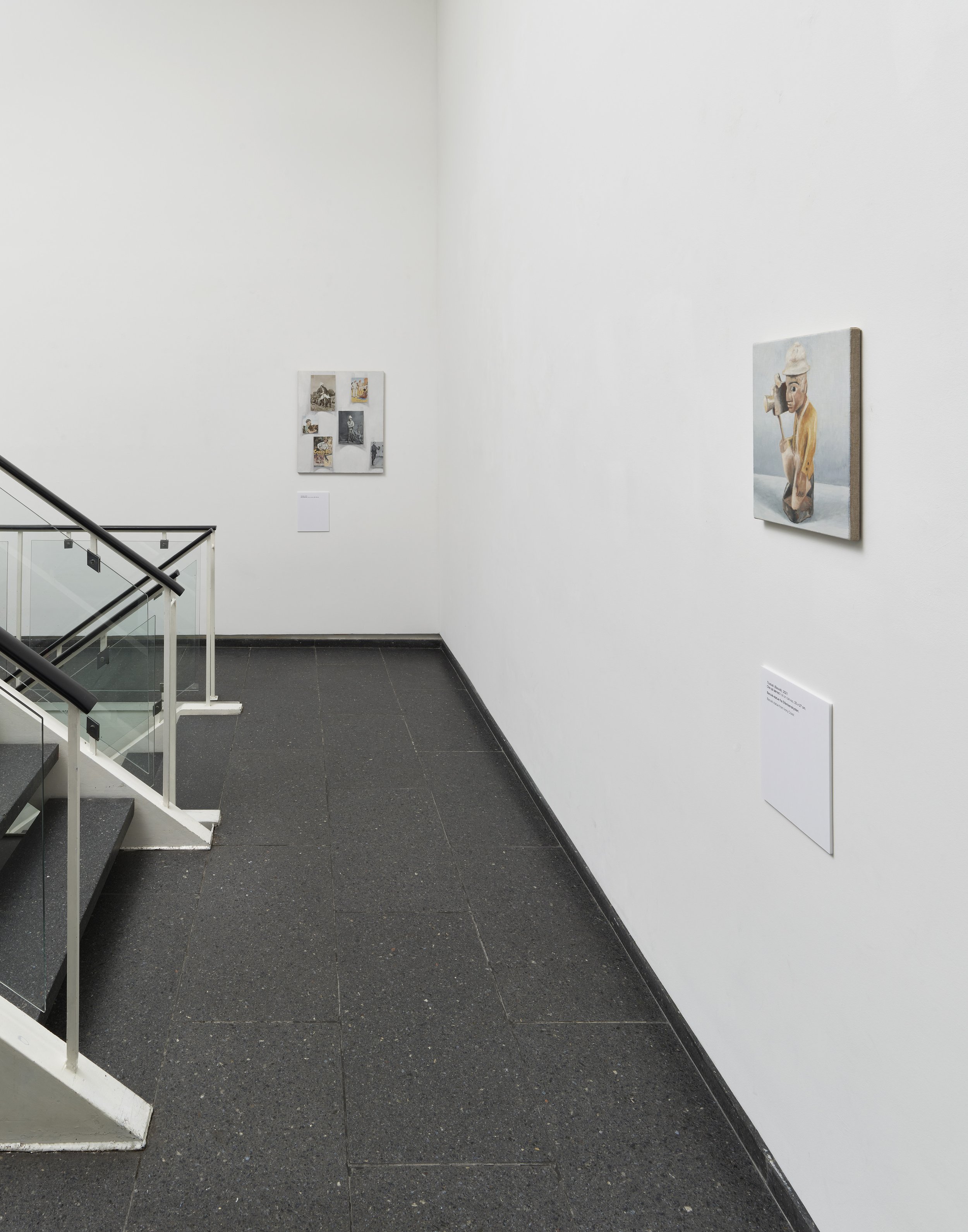PAST
JOHANNES SIVERTSEN
Toubab
April 9 - May 15, 2021
(please scroll down for images + click HERE for a full reader on the exhibition!)
Text by Louise Steiwer, cand. mag. in Art History
The term "Toubab" originates from the former French colonies in Central and West Africa and denotes the white, European man. From here, the word has been absorbed into the French language through the Parisian suburbs, where a large part of the inhabitants have roots in the former French colonies, and where Johannes Sivertsen himself grew up. But the word does not exist in neither Danish or French translation, and precisely that absence is the starting point for Sivertsen's first solo exhibition in SPECTA.
When we think of the colonization of West Africa, it is the images of the white man that come to mind. Pictures of paddle steamers, of new breakthroughs and of the locals looking shyly into the lens. But as the white European looked at the strangers, some of them looked back and created Toubab sculptures; figures showing the white European man with tropical helmet, rifle and camera. In "Toubab", Johannes Sivertsen examines the white man as a (neo-)colonial archetype and as an object for the eyes of others. It is the white man who ventures out into the world with the self-understanding that his own ideals of freedom, democracy, and social structures are universal and elevated, above subjective interpretations; the white man who colonizes and waged war, but also him who sees it as his moral duty to save and educate others, without being aware of his own blind spots.
In Johannes Sivertsen's exhibition, paintings of the toubab sculptures are equated with paintings of other already existing pictorial material. Private and official photographs, mainstream posters and public sculptures mingle with each other, and between them new contexts emerge questioning the idea of an objective point of view. Through the white man's favorite form of expression, oil painting, as a medium, Sivertsen examines how the juxtaposition of images from different times and places can form a new story about the white man's actions in the world.
Based on the classic landscape painting, "Toubab" zooms in on the territory and on the strategies used to subjugate it. From the explorer on the paddle steamer down the Congo River to the modern exploitation of the mines in the inner Congo. From the napalm bombings of villages during the Algerian war to the post-war nuclear tests in the Algerian desert. And from the neo-Nazis patrolling the Parisian suburbs to the legionnaire spreading terror among the locals of Mali.
The white, European man sits - historically and today - on the power of definition. During the Berlin Conference in 1885, he drew the lines that divided the African continent, and today he still belongs to the only group that does not understand itself as a group with special interests, but perceives its ideals as generally applicable. With "Toubab", Sivertsen imposes on him an imperative; a call from one white man to another to turn his gaze, not to the otherness of others, but to his own blind spot. A point of view from which the colonial era is not only the history of others, but also of his own contemporaries.
Johannes Sivertsen (b. 1984, Paris) was educated from the Funen Academy of Arts in 2014 and from Ateliers Beaux-Arts de la Glaciere, Paris. He has done a number of exhibitions, most recently ”The Unnamed” in 2020 at Overgaden - Institute for Contemporary Art in, I:Project Space (Beijing), JCE Biennalen, at SPECTA, a.o.. Sivertsen has been awarded with several grants, most recently from Aage & Yelva Nimbs Fond og and Jens Søndergaard og Hustrus Mindelegat. Johannes Sivertsen is represented in collection of the Danish Arts Agency and The Collection of the city of Copenhagen.
Johannes Sivertsen, Toubab, 2021, oil on canvas, 33 x 27 cm

Johannes Sivertsen "Toubab", installation view, SPECTA 2021

"Toubabs", oil on canvas, 65 x 54 cm

"Study for a collective portrait of Leopold II (l'arbre qui cache la foret?)", 2021, oil on canvas, 33 x 27 cm

"The Final Journey of Savorgnan de Brazza", 2021, oil on canvas, each 27 x 33 cm

"Photographer", 2021, oil on canvas, 33 x 27 cm

"Yoruba Mask", 2021, oil on canvas, 33 x 27 cm

Johannes Sivertsen "Toubab", installation view, SPECTA 2021

"Gerboise", 2021, oil on canvas, 41 x 33 cm

"Berlin", 2021, oil on canvas, 41 x 33 cm

"Soldier and Landscape with Napalm (Algeria)", 2021, oil on canvas, 41 x 33 cm

Johannes Sivertsen "Toubab", installation view, SPECTA 2021

"Expedition", 2021, oil on canvas, 33 x 27 cm

"Congo", 2021, oil on canvas, 33 x 41 cm

"Hammock", 2021, oil on canvas, 33 x 27 cm

Johannes Sivertsen "Toubab", installation view, SPECTA 2021

"Identitaires", 2021, oil on canvas, 33 x 27 cm

"The Legion", 2021, oil on canvas, 41 x 33 cm

